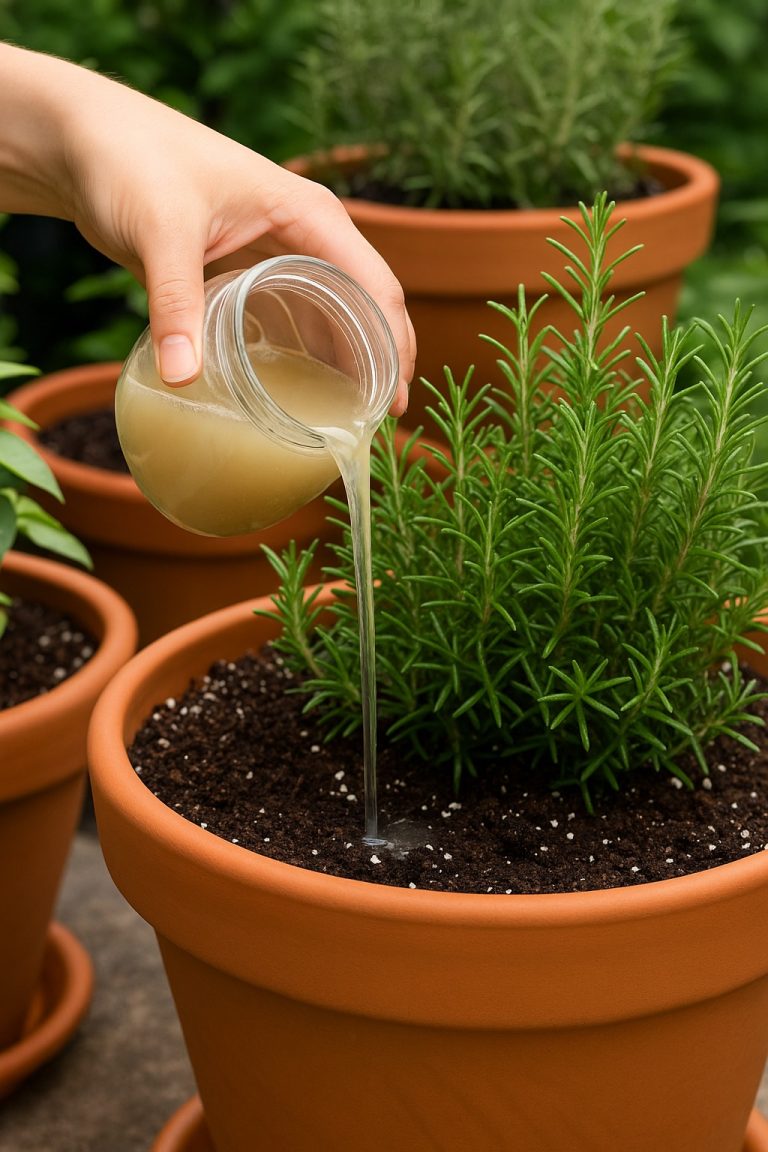Tip: If you have it in a pot, choose a sunny location, such as a north-facing window or an exposed balcony.
2. Avoid excess water: less is more
Rosemary tolerates drought very well, but it does not tolerate overwatering. The roots can easily rot if the substrate remains wet too long. Therefore, it is essential to water only when the soil is completely dry.
Practical tip: I put a finger in the dirt; If you feel damp, wait a few more days before watering.
3. Strategic pruning to encourage leafy growth
One of the keys to growing rosemary thick is regular pruning. Cutting the tips stimulates the production of new side branches, resulting in a denser and more compact plant.
How to do it:
- Use clean, sharp scissors.
- Make gentle cuts on the longer branches, just above a node or shoot.
- The best time to prune is in late winter or early spring.
4. Natural fertilizer: little but effective
Although rosemary doesn’t need much fertilizer, a moderate dose of organic fertilizer every 2 months can strengthen the plant and improve its aroma.
Recommended options:
- Ripe compost
- Worm castings
- Banana or ash tea, in small amounts
Avoid fertilizers with a high nitrogen content, as they promote the growth of weak leaves with little aroma.
5. Control pests and diseases naturally
Although it is resistant, rosemary can be attacked by aphids, mealybugs or fungi, especially if there is excess moisture. To keep it healthy:
- Sprinkle with garlic or chamomile-infused water once a week.
- Do not wet it when watering, avoid wetting the leaves.
- Remove dry or diseased leaves quickly.
A dry and sunny environment is the best natural defense.
With these 5 simple but key tips, your rosemary plant will be able to grow healthy, leafy and with an irresistible aroma all year round. Whether in a pot or in soil, you just need to provide it with the right environment, avoid overwatering, prune it intelligently, and keep it pest-free.
